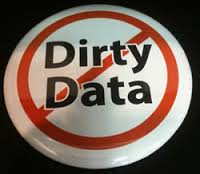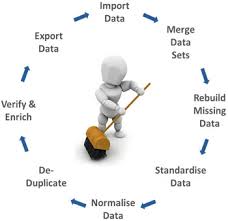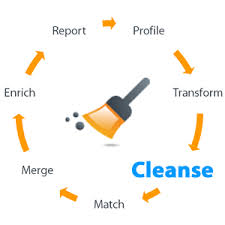All organizations should be able to increase their business opportunities and their productivity by the use of the data they already possess in their archives. This is due to the insight concepts that we highlighted in SMART use of Data. It then might seem very easy for any organization but there is a hindrance that might arise that may kill this venture right from the start and that is Data Accuracy.
Tapping into an organizations database can help it make wise, informed and accurate decisions but if the data is tainted in any way then the organization will end up making inaccurate decisions that may be the death of that organization. The quality of the data that an organization possesses therefore becomes very important for the lifeline of the organization. It is no longer about just acquiring of data but that the data acquired is accurate, complete, relevant, consistent, reliable and accessible. Data quality is usually affected in the processes of data entry, storage and management. Data quality assurance is therefore the process of verifying how reliable and effective the data an organization holds is. Maintaining Data Quality requires for an organization to periodically go through their data and scrub it or cleanse it.
Data Cleansing or scrubbing is the process of going through data and detecting, correcting or removing corrupt or inaccurate data from a database. The process entails the identification of incomplete, inaccurate, irrelevant, incorrect data and then taking a step to replace, modify or delete the data that seems to present issues. The process of data cleansing may be as simple as the change of addresses of some customers or as hard as dealing with incomplete data that was not collected in the first place. In data cleansing some of the data may have to be deleted on the grounds of being incomplete and thus irrelevant to the organization.
Data cleansing may seem as the ultimate solution to ensuring high quality data for an organization but it is also plagued by some challenges.
- Error Correction that leads to loss of Information: the greatest challenge in data cleaning is the correction of values by removal of duplicates and invalid entries. At times the errors detected are so significant and there is no sufficient information present to enable the correction of the data. This leaves one with no option but to delete the data. Deletion of the data automatically leads to the loss of information. This can in turn be very costly if the data deleted is in huge amounts.

2. Maintenance of cleansed data: data cleansing is a very expensive and time-consuming process and thus cannot be done on a daily basis. It then requires efficient data collection and management techniques that will enable one to only perform this exercise on only the values that have changed with time.
3.Data cleansing in virtually integrated environs: In virtually integrated environments, it is important for the data to be cleansed every time it is accessed. This in turn reduces the response time and efficiency due to the repeat data cleansing.
Data cleansing may have its challenges but it is a worthwhile venture that will save any organizations future. Data Quality Management is a field that we specialize in at Kenvision Techniks Limited and we would love to share our knowledge with you!




